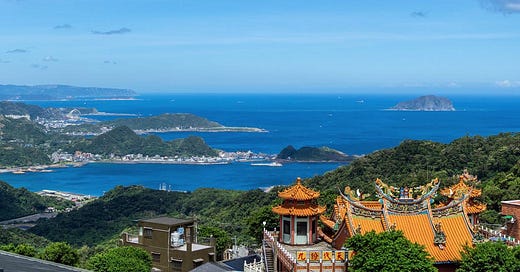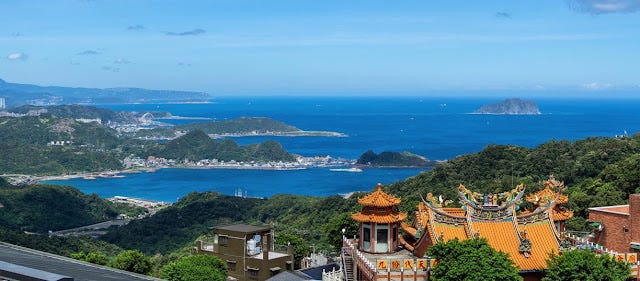"The Long Game" series has been running heresince 2004.
18-years.
I'm starting to wonder if the title is all that accurate anymore. That which we have been warning about since the dawn of this blog is - if you are a believer that the PLAN is more than a job's program - here.
Well, we're sticking with as it is what it is. If nothing else, you have to give a nod of respect to the People's Republic of China. They had a good plan and stuck with it.
Sadly, we still have over 51% of the people who have access to levers of national power who don't get it. Things are getting better, but ... faster please. We are getting closer and closer to the critical mass needed to effectively face this challenge. We are not there yet, but more and more clear minded people see it.
We don't have either the right uniformed leadership nor Executive Branch vision to turn in to the wind. The mass I mentioned in the previous paragraph, right now, is located in Congress.
I'll point you - again - to Rep. Mike Gallagher (R-WI) one of the more outspoken members of Congress trying to draw attention to the peer threat on the other side of the Pacific.
...expected cuts in next year’s defense budget will likely further shrink the size of the fleet.
Meanwhile, U.S. and allied bases in the Pacific have not been upgraded. Congress has not yet funded a badly needed air and missile defense system on Guam, which houses an air and naval base that would be on the frontlines of any conflict over Taiwan. And at bases across the region, stockpiles of precision-guided munitions are insufficient to support a prolonged conflict.
At present, the United States is on track to lose a war over Taiwan. Yet it is not too late to change course. With the targeted redirection of existing and readily obtainable military resources, effective planning, and the leveraging of crucial alliances, the United States has the capacity to prevent and, if necessary, to win a war over Taiwan as soon as the middle of this decade. Rather than betting on the restraint of the Chinese Communist Party (CCP) or on technology that will not be ready for more than a decade, Congress and the executive branch must implement a new Pacific defense strategy now. As my colleague on the House Armed Services Committee, Democratic Representative Elaine Luria of Virginia, has argued, instead of Battle Force 2045, the United States needs Battle Force 2025.
Bingo. That's your executive summary. There is a bi-partisan group that gets the challenge and his counterpart on the other side of the aisle is Rep. Elaine Luria (D-VA). Glad to see her in the mix and correct on the timeline. We will never be able to make the turn in time unless this is bi-partisan effort make in a non-partisan environment (as much as one can).
When you look at a chart, it is clear that we have a huge advantage in the Pacific. An advantage in depth if we will properly husband and prepare it. These are actionable steps now.
Washington should also immediately take steps to strengthen ties with the Federated States of Micronesia, the Republic of the Marshall Islands, and the Republic of Palau—the three Pacific island countries that maintain alliances with the United States under a Compact of Free Association. With each of these countries, the United States should seek to permanently extend respective agreements and to establish new U.S. bases in exchange for expanded economic assistance.
...
The Pentagon must also enhance its joint base arrangements with U.S. allies. The United States should work with the United Kingdom, for example, to upgrade the base on the Indian Ocean island of Diego Garcia by adding missile defense capabilities that would allow it to better contribute to a Taiwan conflict and act as a hub for a long-range bomber and surveillance presence in the “Indo” part of the Indo-Pacific. Building on the recent AUKUS agreement with Australia and the United Kingdom, the Pentagon should bolster its cooperation with the Royal Australian Air Force at Base Darwin and Base Tindal in Australia’s Northern Territory. These bases should stockpile munitions to serve U.S. forces operating in the region. And Washington should also seek expanded access in the Philippines, including at Subic Bay. Situated just a few hundred miles from Taiwan across the Luzon Strait, the Philippines would be an essential U.S. partner in any potential conflict. Although the administration of President Rodrigo Duterte seems unlikely to embrace hosting U.S. missiles on Philippine territory, negotiating with Duterte’s successor should top the U.S. government’s Indo-Pacific priority list.
Probably the most important marker in this article is a subtle but firm pushback to the "72-hr war" fever dream too many important people seem to be enamored with.
The below needs to be repeated more and louder my multitudes;
The only short war for Taiwan would be a quick Chinese victory. Consequently, U.S. defense planners must prepare both Taiwanese and U.S. forces for a long war. For close to two decades, U.S. national security leaders have been advising their Taiwanese counterparts to focus on acquiring low-cost “asymmetric” defenses, such as antiship missiles, mobile air defense systems, mines, and unmanned aircraft rather than on far more costly submarines, tanks, and fighter jets. Washington needs to help Taipei invest in more of these asymmetric weapons, which will maximize the difficulty of an amphibious invasion. The United States can start by offering up to $3 billion annually in military financing, assistance that should be made contingent on Taiwan increasing its own limited defense budget and investment in these types of capabilities.
Read the whole thing ... to the end. As Gallagher outlines, a loss of Taiwan would not be and end for the Chinese threat, but the beginning.





FWIW, three points:
1- Were CCP strategic, they would target Palau first, not Taiwan. Whether they have sea-lift to do that is arguable. But were a Palau invasion force to meet no US resistance -- as is most likely given D.C.'s installed CCP partisans in charge -- CCP could deal with Taiwan later at leisure and move immediately to threaten the line Sitka-Oahu-Lima. The installed officials already have pulled the US western defense line back to Oahu -- as Japanese have pointed out and other Asian nations have already moved to address -- and likely, in their minds, back to the US west coast, at minimum.
2- Under optimal circs -- USG mechanisms in hands of enlightened patriots -- US and Asian countries deploy Battalion Task Forces along flanks of possible CCP lines of march east and south.
3- The key alliance in all of this is US-India-Russia. Installed officials will never do that, of course, but patriots should plan for it and signal that ahead of arriving in D.C., which will happen soon enough.
Where have USNA grads been for the last 30 years? The guilty wear boondocksers , fix USNA.